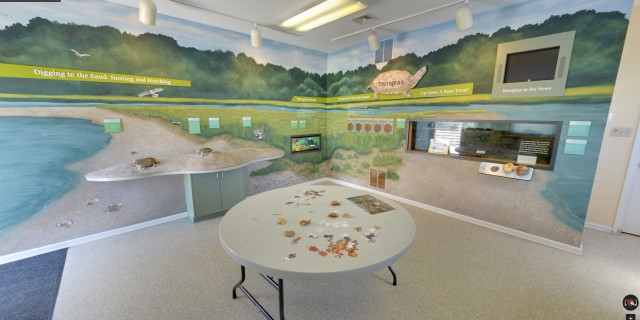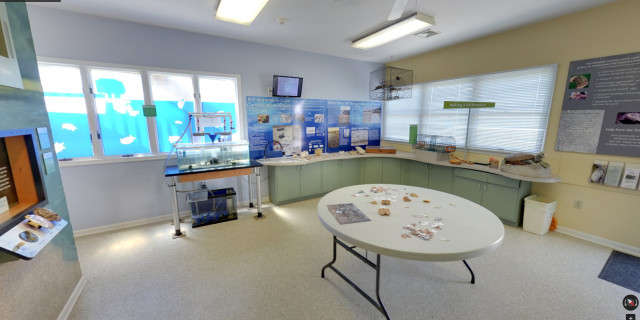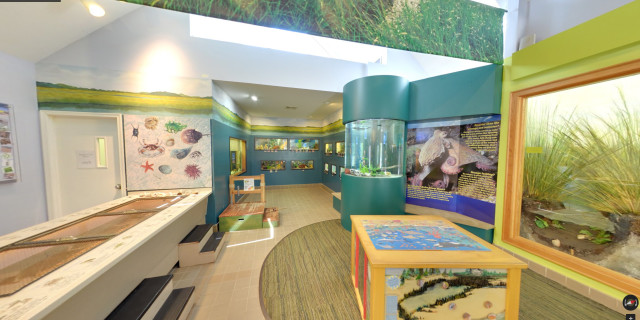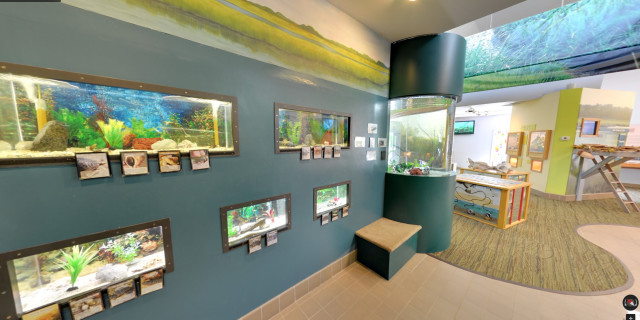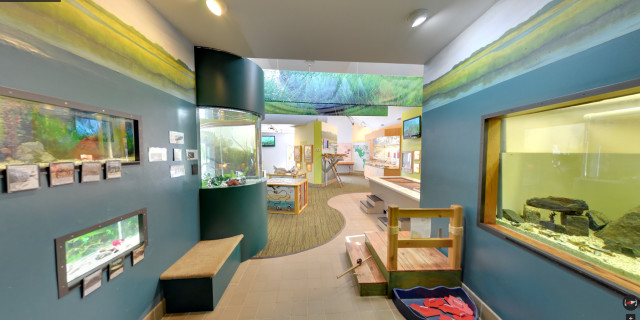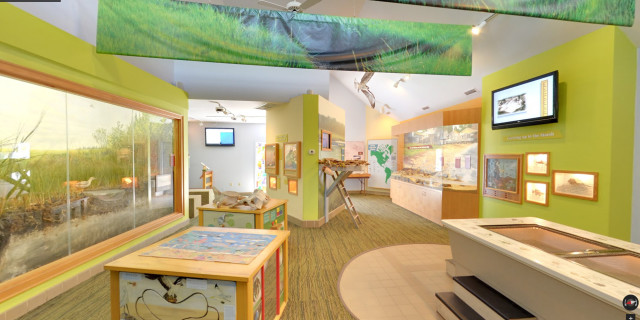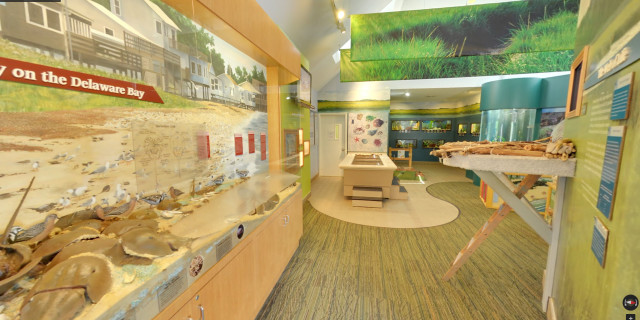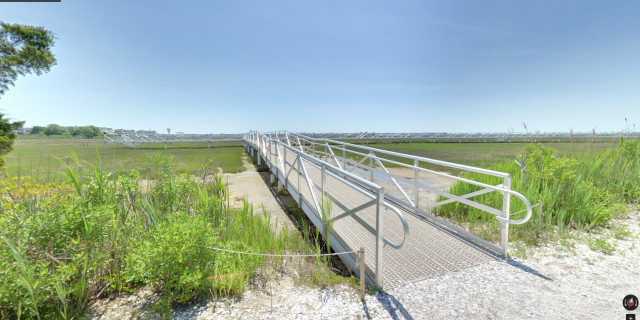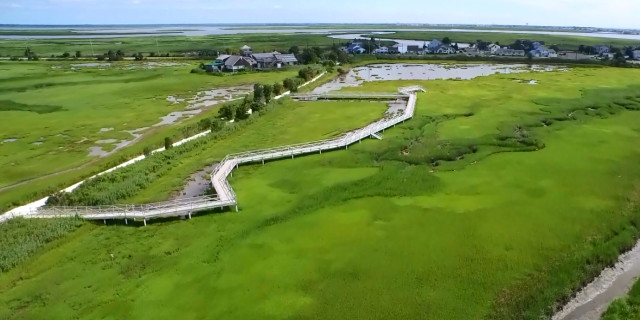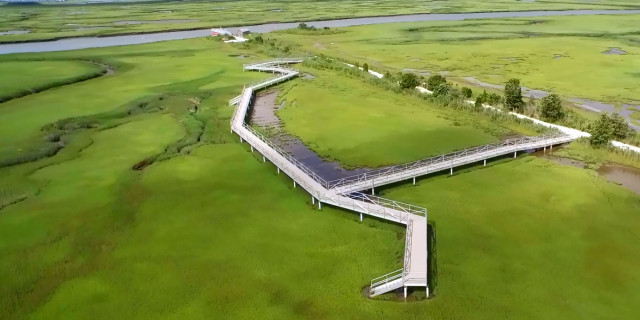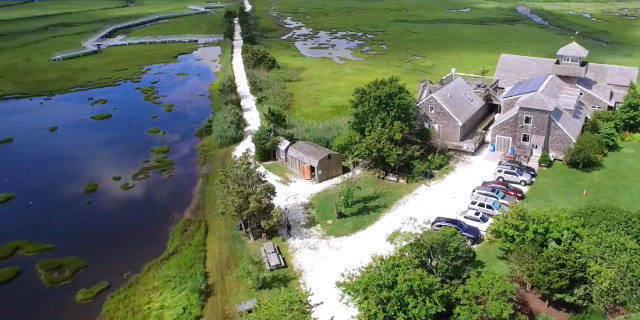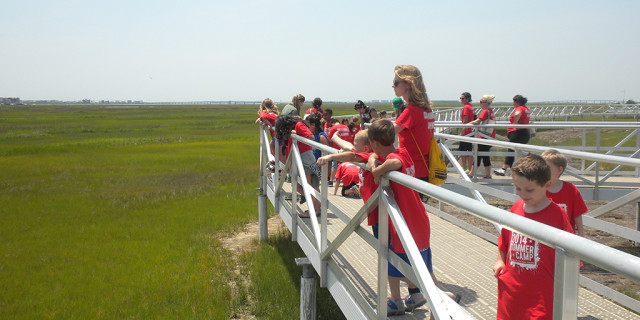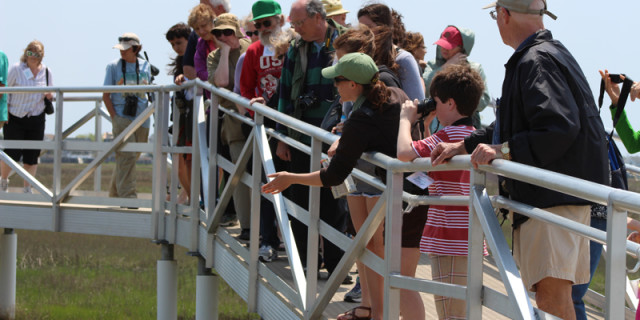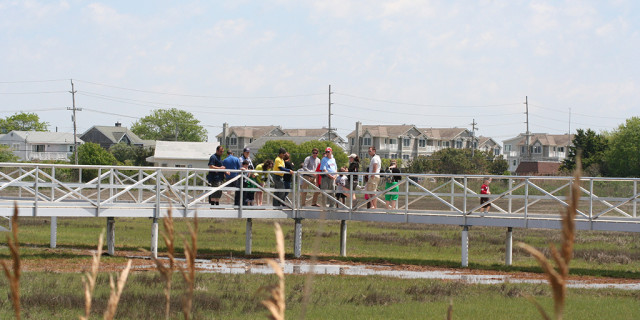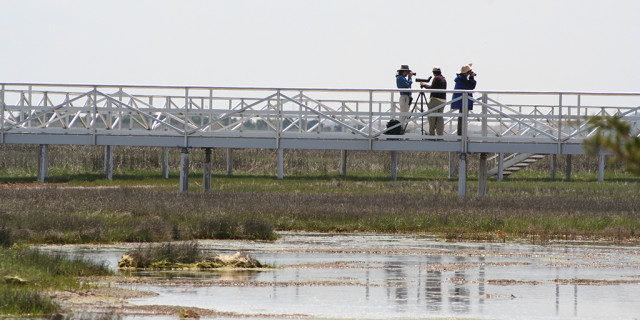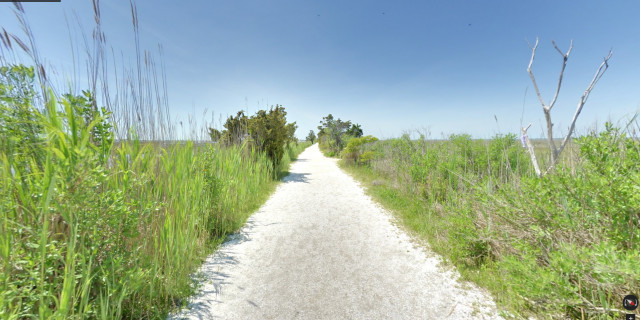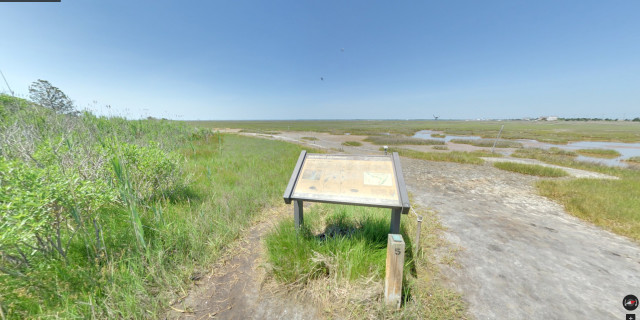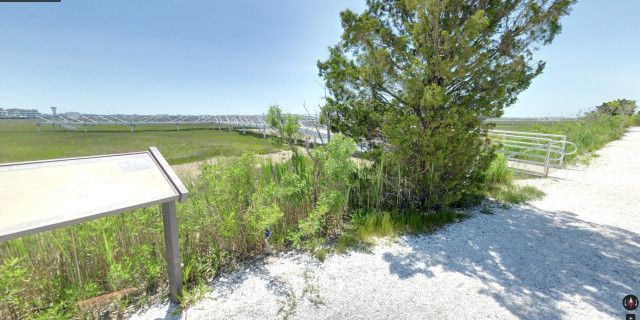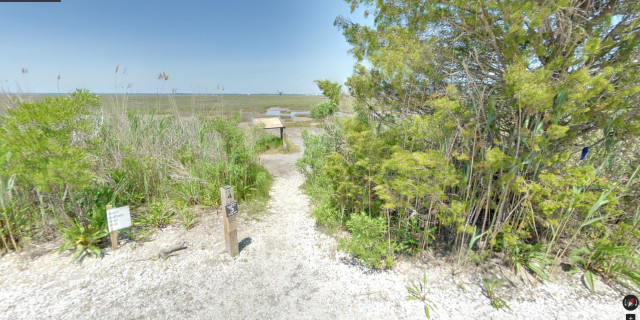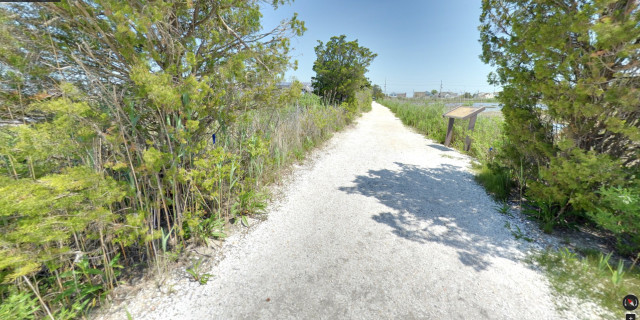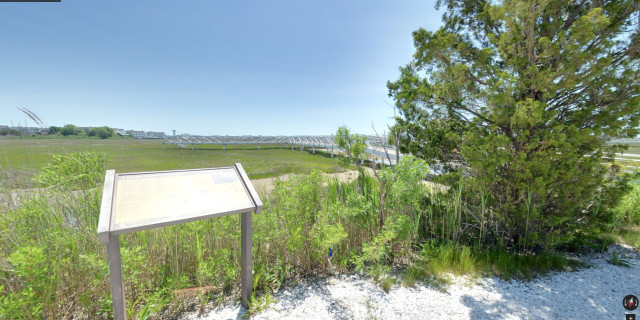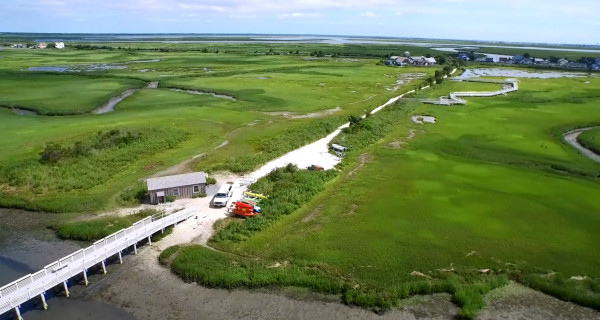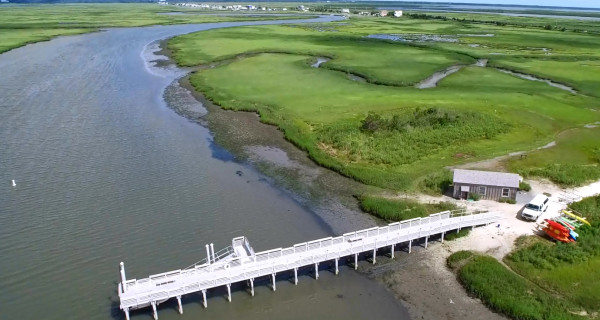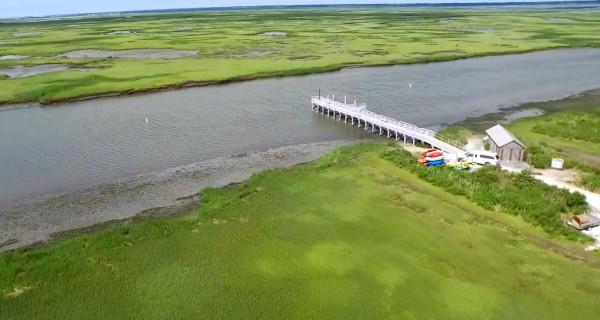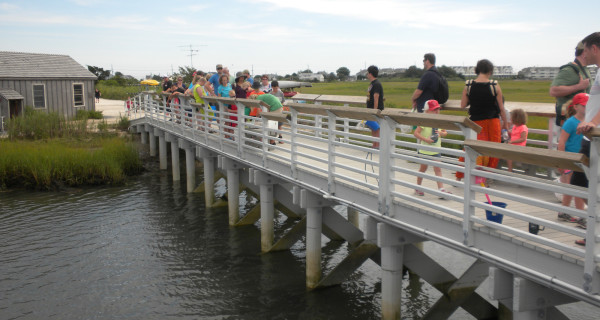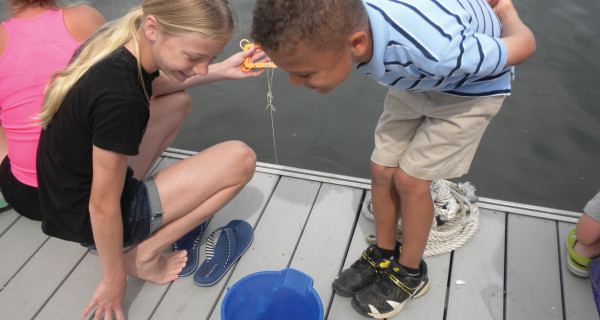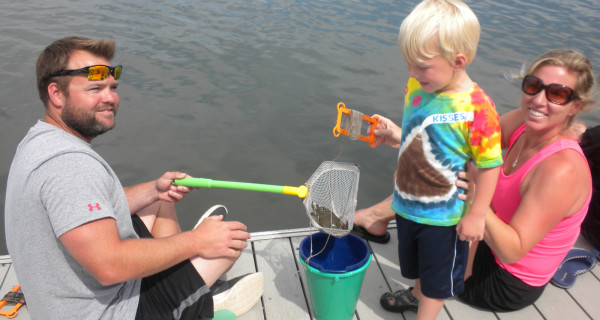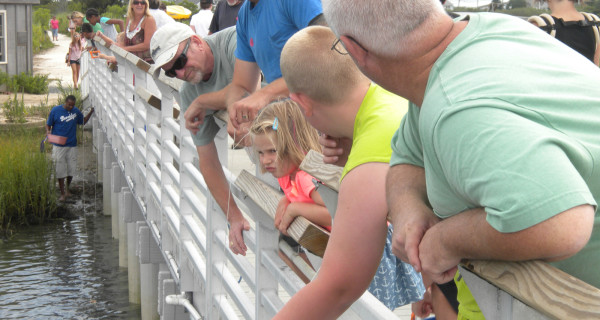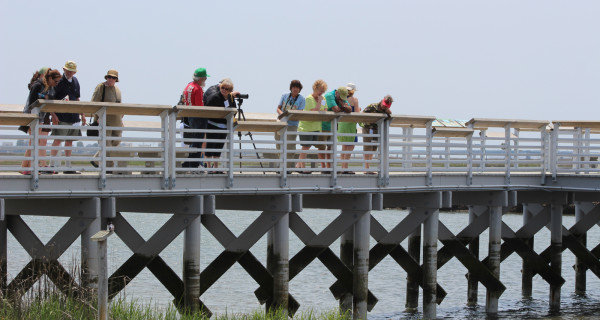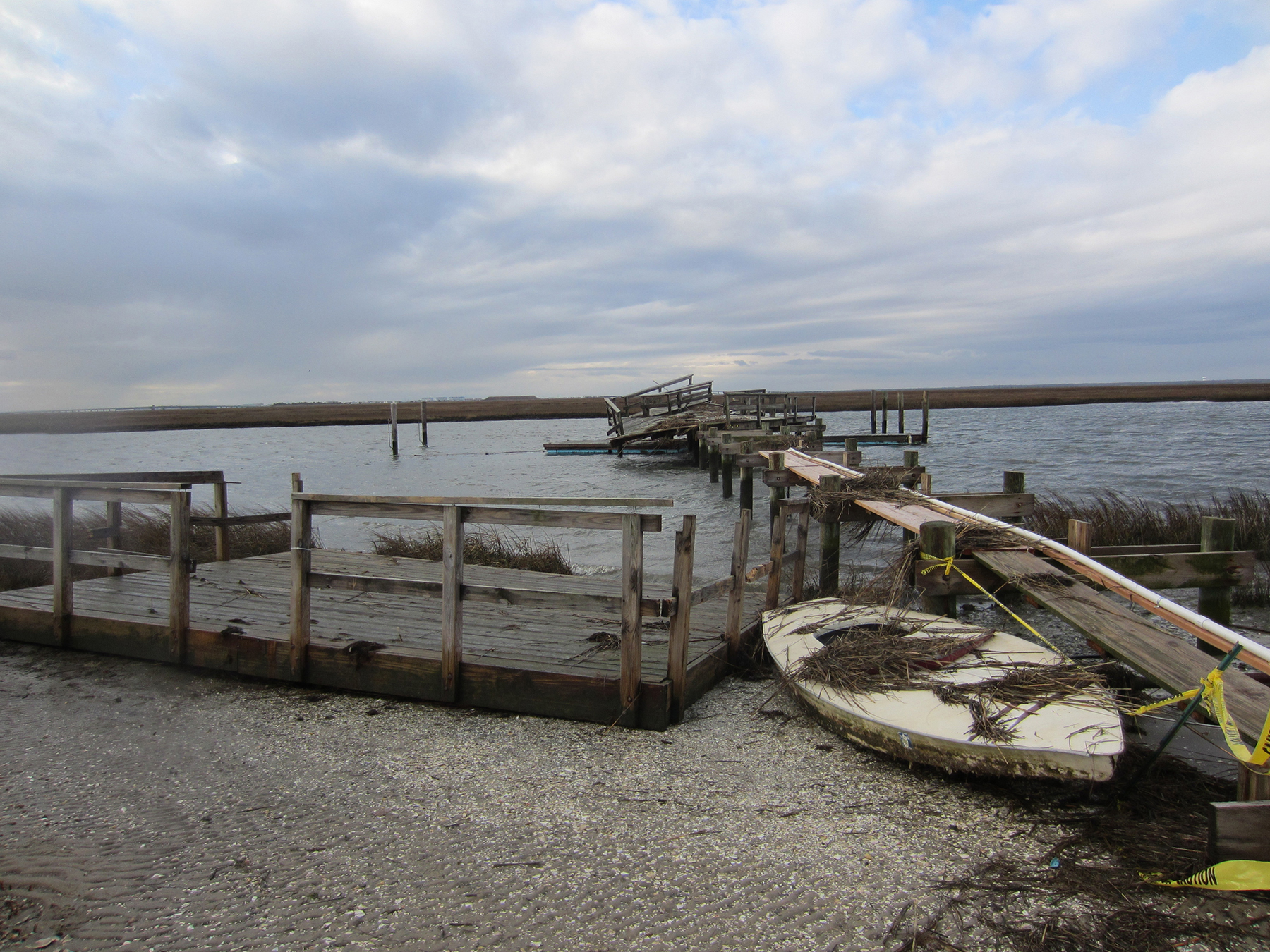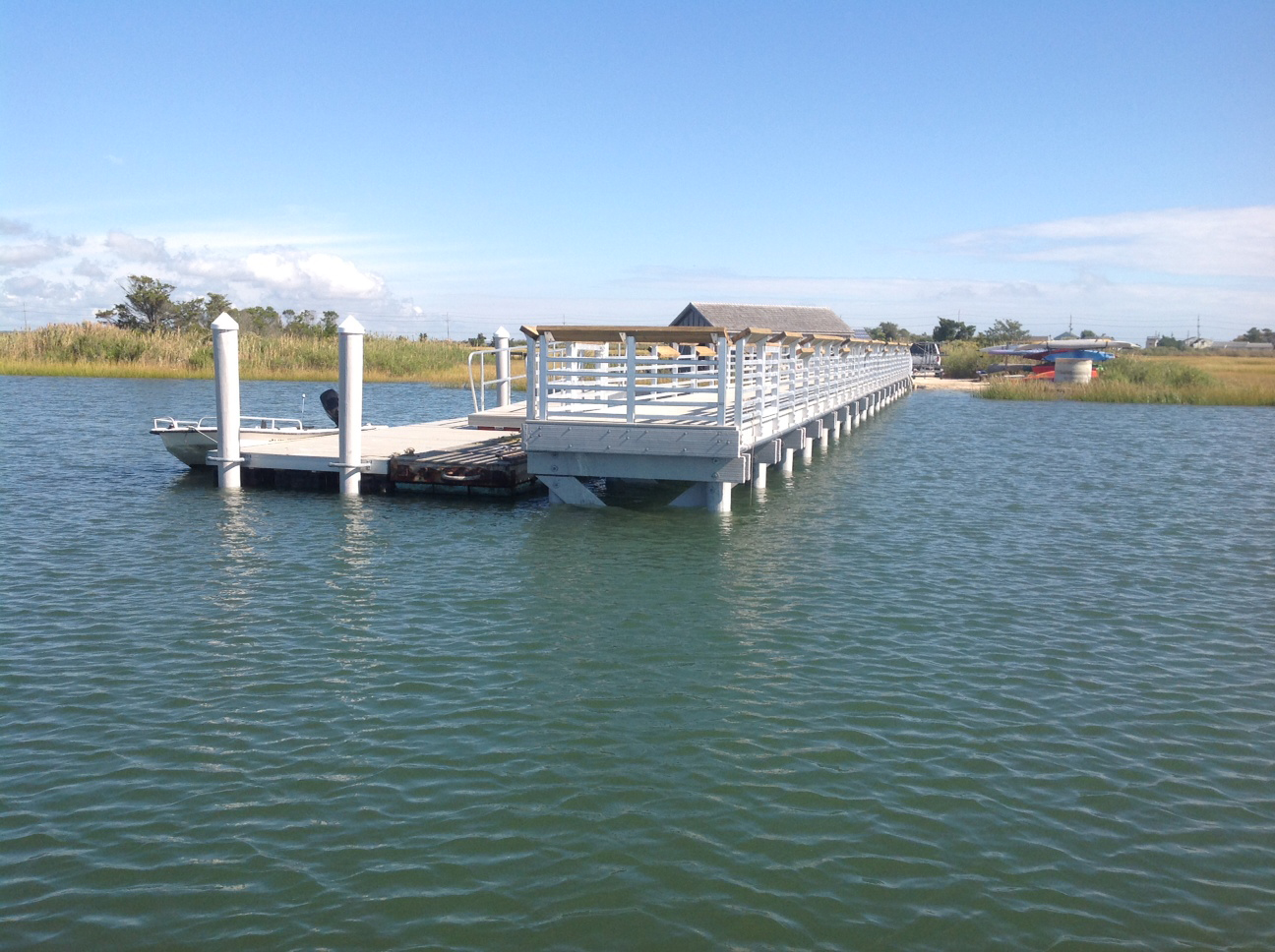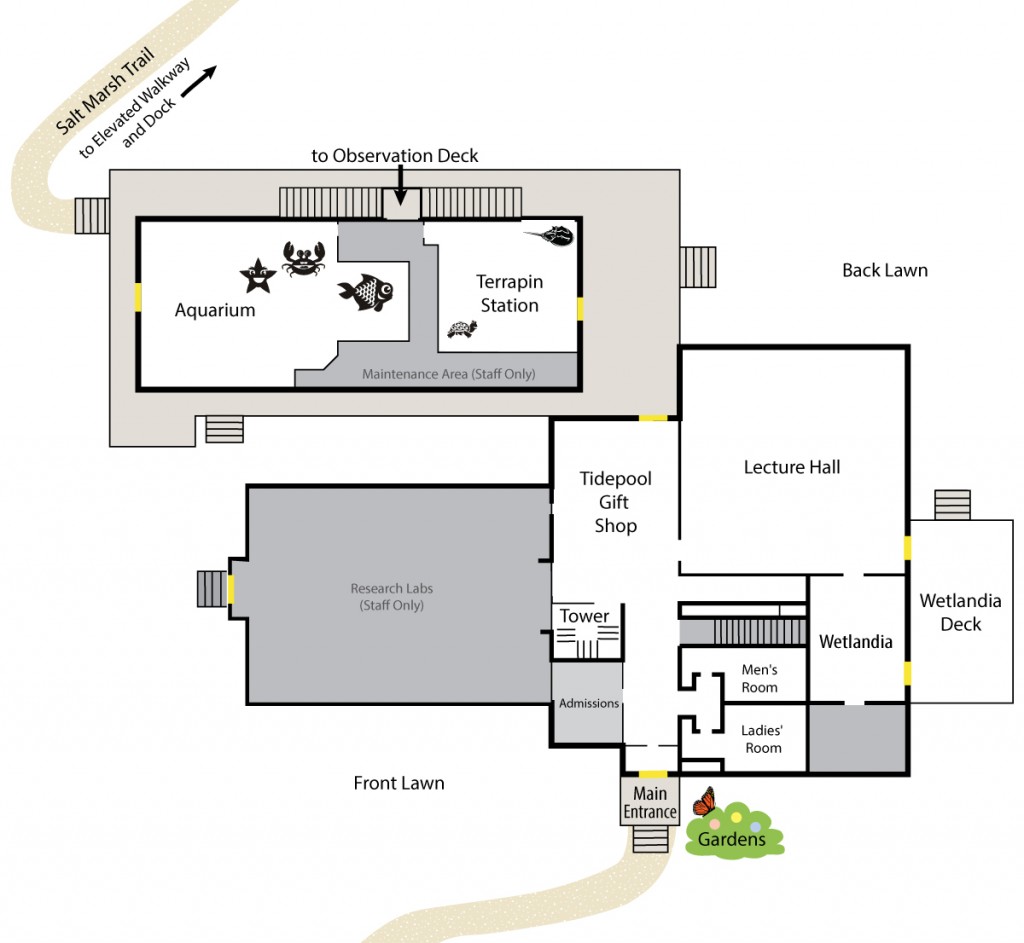Terrapin Station
Terrapin Station, is the first exhibit in the world that is dedicated to the life history of the diamondback terrapin. Visitors can learn more about this landmark conservation project through a variety of informational displays. We take you through the life and troubles of the native turtles from birth and learn what the Institute is doing to help them.
The diamondback terrapin is a keystone species whose very presence contributes to a diversity of life and whose extinction would consequently lead to the extinction of other forms of life. Since the Wetlands Institute values the importance of diamondback terrapins to wetland habitats, terrapin research and educational programming has been the focus of our conservation efforts for two decades. In fact, our diamondback terrapin project has received national attention from ABC and NBC News, New York Times and the National Geographic Society.
Aquarium
Our Aquarium features over a dozen exhibits with live marsh animals as well as a special “teacher’s tank” with live horseshoe crabs, sea stars and lots more. It also houses hands-on, interactive exhibits designed to immerse visitors in the wetlands life, educating the observer in the important role wetlands play in life on the planet.
Marshview Hall
The Marshview Hall, has expansive views of the surrounding marsh. Visitors can examine a variety of wildlife art and carvings. The hall features several hand-carved wooden bird mobiles that are visually breathtaking. We also showcase our hand-sewn quilts.
During the summer, possibly the most exciting feature of Marshview Hall is the mini camera mounted on top of a nearby osprey nest which allows up-close views of nesting osprey on the hall’s large television monitor.
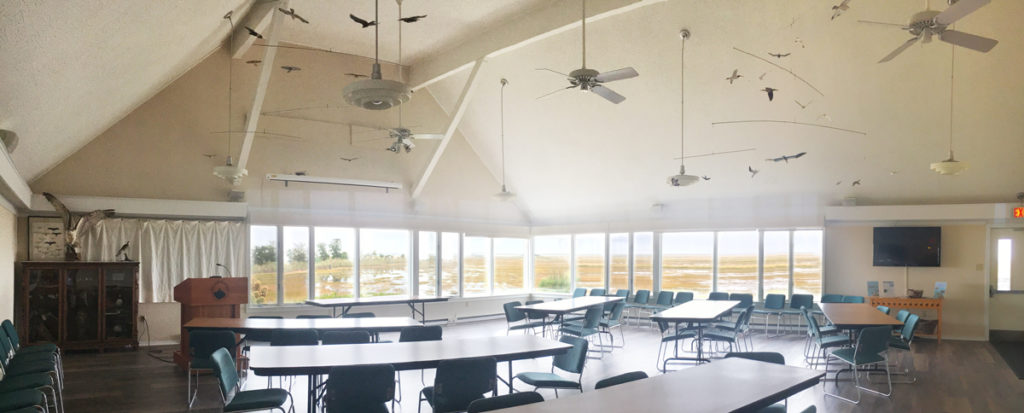
Elevated Marsh Walkway
Plans for a new elevated walkway began after destruction of the old wooden walkway during Hurricane Sandy in October 2012. Reconstruction was an opportunity to rethink the possibilities for the walkway and reposition it for improved access to the marsh for both research and education. Construction was completed over the winter and early spring 2014 and the walkway was open to the public in mid-May.
The walkway design and construction was carefully conceived to balance providing access to the marsh for visitors to learn about the marsh ecosystem without impacting the fragile ecosystem. It was also designed to be more resilient to storms and rising sea level – two important factors.
The winter construction was designed to cause minimum impact to marsh grasses that are dormant through the winter and to minimize disturbance to birds and animals that use the marsh during migration stopovers and for the nesting osprey.
The walkway is a 720 foot long loop with an extension for better viewing of the front salt panne. The walkway can be accessed by ADA compliant ramps at two locations from the Institute’s shelled nature trail during Institute business hours.
The walkway stands 4 ft from the marsh at its base and is 6 ft wide. Aluminum railings line the elevated walkway, ramps, and stairways for safety. Two sets of stairs allow restricted access for Institute personnel leading research and education programs.
Research and education stations on the new elevated walkway provide for improved access to the marsh for biological and environmental sampling and hands on learning opportunities.
The walkway is constructed using state-of-the-art methods, is sustainably constructed and utilized local contractors and locally sourced material to the extent possible. The walkway utilizes a steel helical pile construction. Piles were cork-screwed into the marsh and extend on average 30 feet below the marsh surface until they reached a lower compact sand layer. The main walkway structure was locally fabricated and is aluminum.
The grated surface is polycarbonate and is specially designed to allow sunlight and rainwater to reach the plants and animals below and reduce the overall impact to the marsh. Since water can flow through this surface, the walkway has a better chance at surviving major flooding events and storms. Because the entire structure is metal with polycarbonate, there is no lift associated with flooding, making likelihood of damage during rising water levels in storms less. The entire structure can be recycled – if ever necessary.
The project was designed and executed to impose minimal impact to the salt marsh. The salt marsh vegetation is growing back very well and should fully recover in the coming weeks. There are two areas with more impact. Institute staff and volunteers are planting 15,000 plugs of Smooth Cordgrass (Spartina alternaflora) in disturbed areas by late-May.
All work on the marsh required the use of matting to distribute the weight of heavy equipment and prevent rutting. Decking was installed in 40 ft’ prefabricated sections to increase the speed of installation and decrease time on the marsh. Nearly 90 – 2 7/8” helical steel pilings were installed for a small footprint and strong hold in the marsh. Surveys and boring tests of the marsh were conducted in advance to determine piling locations and elevations.
The costs of the new walkway are covered in part by a FEMA Disaster grant following the destruction of our previous walkway during Hurricane Sandy in October 2012. Remaining costs will be funded through donations.
All necessary permits were obtained and have all conditions of the permits have been met. Pilings were in place before March 15, as a condition of NJDEP permits. The old boardwalk was removed in early 2014, also as per permit.
Contractors (NJ based, and all in 2 county area): Titan Shoring and Construction (construction), Dixon and Associates (engineering), Blue Water Welding (fabrication), The Lomax Consulting Group (environmental review and compliance).
Salt Marsh Trail
Dock
More than a year has gone by since Hurricane Sandy’s wrath took aim on our region and put a damper on programing at The Wetlands Institute by destroying our dock. Deprived of much needed access to Scotch Bonnet Creek, we had to cancel some of our summer activities including back-bay boating tours on the Skimmer, hooked on fishing and crabbing at the dock. But with much determination, we managed to revise our programming and have a very successful season.
Our back-bay kayak tours were launched from alternate locations. We even made do with the low tide which left us little access to water during our Crabulous Crab Day. Our visitors enjoyed a full schedule of programs but it wasn’t quite the same. We were missing an integral part of our facility.
Another significant challenge brought on by the loss of our dock was the loss of our salt water pumping system. This system is used to pump water along the quarter-mile long Salt Marsh Trail to maintain our aquarium. Losing this system meant having to haul water by truck in a 500 gallon tank every week.
The new dock was officially opened to the public in September, during our 1st Annual Fall Migration Festival. And it was well worth the wait! The 122 foot long structure is higher and is constructed of all new non-polluting materials. Its railing system has two heights providing safe and great views for kids. We have boat slips for our 2 research boats and an area for the Skimmer to dock. Gates provide access to water monitoring research equipment that will be installed in the spring. A new submerged pump has the pumping facility back on line.
The rebuilding was made possible through your generosity. We couldn’t have done it without all your support and we are thrilled to be back in business and better than before. The McLean Contributionship supported the project with a $15,000 grant and contributions to The Wetlands Institute’s Sandy Rebuilding Fund raised more than $40,000. The remaining funds will come from a Federal Emergency Management Agency disaster assistance grant.
Although it made for a challenging year, the setback brought by Sandy has not affected our motivation to keep moving forward. Our rebuilding efforts continue. We are about to begin construction on a new and expanded elevated loop boardwalk to replace teh damaged walkway. We have substantial expenses to complete this construction. A FEMA grant will pay $100,000 of the estimated $250,000 cost of the new boardwalk but we need to finish construction this winter to qualify for the grant. So we still have much to do!
These are exhilarating times at The Wetlands Institute as we build a center of excellence in research, conservation and education.
We are grateful to all of you and hope you will continue to support our rebuilding. Hope to see you soon enjoying our new facilities.

